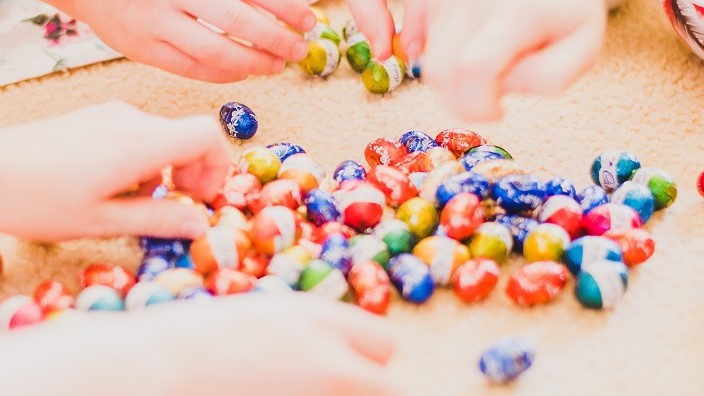 Have your kids been browsing the Sydney Easter showbag catalogue with hungry eyes? Or maybe they keep nagging you about some toy advertised on YouTube? Either way, it is important to teach children from a young age the value of the dollar (even if it does sound like we’re channelling a lecture from your own parents).
Have your kids been browsing the Sydney Easter showbag catalogue with hungry eyes? Or maybe they keep nagging you about some toy advertised on YouTube? Either way, it is important to teach children from a young age the value of the dollar (even if it does sound like we’re channelling a lecture from your own parents).
Generation Alpha (children of millennials), are growing up in a time of immediacy. It’s an era where everything they want can be at their front door with the touch of a finger. Unlike their parents, who would get home after school and watch the clock until Round the Twist came on ABC Kids; they get home and can instantly open Netflix or YouTube where they can choose whatever they feel like watching at the time.
It’s important now, more than ever, for kids to learn that persistence, patience and effort comes with its own rewards. Teaching your children to save from a young age can help them develop good money habits, so when they grow up, they can provide for themselves and achieve their goals.
So, to help parents, we collected some fun ways to start teaching your kids to save, so they can earn what they want in life.
1. Paint a Piggy!
Whether it’s a jar, a piggy bank or a jewellery box; find something they can hoard their coins in and decorate it together. This way, they can develop more of a connection with their savings and associate it with being part of a fun process.
2. Play Treasure Hunt
Remind your kids that their savings is their treasure. You can do this by playing a fun game of treasure hunt! You can hide their piggy bank and draw them a map to find it – potentially buried in their laundry basket with an ‘X’ over it. Just make sure you explain to the kids that the piggy bank should only be hidden in the house by mummy and/or daddy. Otherwise, you could end up with a missing piggy bank and a very teary child.
3. Play Shop
Playing shop can help teach your child numeracy and basic economics. You can go to a bargain store and find some toy money in different denominations. Give your child the money and pretend their room is a shop. You can put price tags on things, or just tell them the prices and how much they can afford.
4. Be a Big Kid
When their piggy bank is full, it’s time to deposit their hard-earned coins into their bank account. However, opening a kids savings account for your child doesn’t have to be boring. Get them excited about saving by telling them bank accounts are for big kids and you believe that they are ready! We recommend saying they are ready because of something they have achieved, whether it’s tying their shoes, helping around the house or tidying their room.
Your kids will be excited for the responsibility of their first bank account if you highlight it as a rite of passage. It could make it even more special if you let them do something else fun for big kids, like letting them help themselves to the snack cupboard, letting them feed the pets or taking the training wheels off their bicycle. | Greater Bank
5. More Arts & Crafts
Create a poster or visual aid representing your child’s saving goals. You can use stickers or colouring pencils to navigate as your child moves closer towards their savings goals! This will keep their savings goals at the front of their minds. It can also encourage your child to think of different ways to add to their savings pot e.g. the NSW eco-friendly cash for cans initiative means anyone can collect cans and bottles in exchange for cash.
Greater Bank encourage positive savings habits for people of all ages. For anyone under 25, we offer our Life Saver account, which provides a strong interest rate with no monthly account keeping or transaction fees, to encourage young people to save what they earn.
This article is intended to provide general information of an educational nature only. This information has been prepared without taking into account your objectives, financial situation or needs. Therefore, before acting on this information, you should consider its appropriateness having regard to these matters and the product terms and conditions. Terms, conditions, fees, charges and credit criteria apply. Information in this article is current as at the date of publication.

